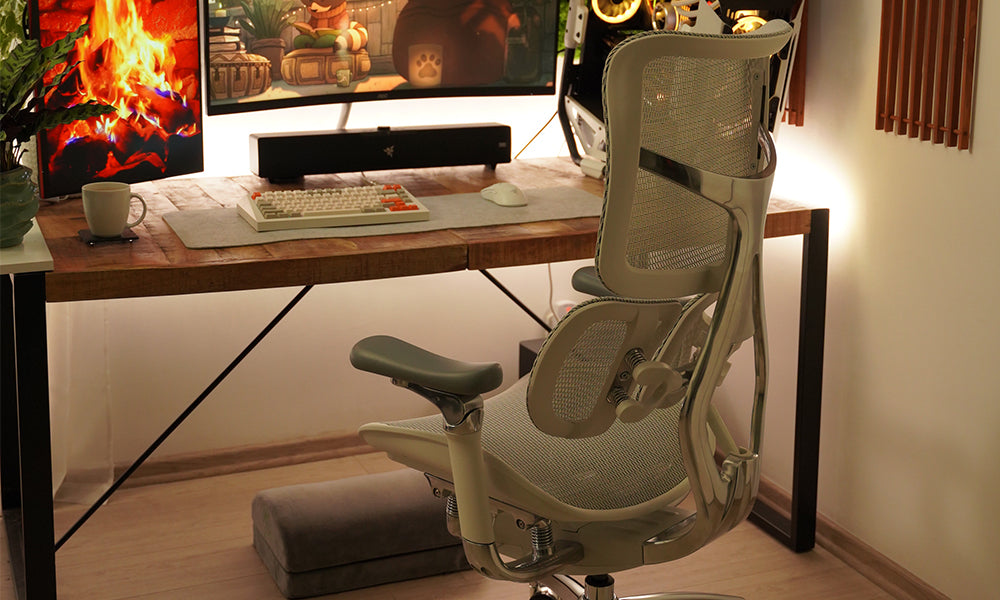As more organizations recognize the importance of employee well-being, standing desks are emerging as a solution to combat the negative effects of prolonged sitting. This blog post explores how standing desks can improve employee health and productivity while offering insights into their practical implementation.
The Need for Change
The traditional office setup often involves employees spending hours seated at desks, leading to a myriad of health issues. Studies indicate that prolonged sitting is linked to obesity, cardiovascular disease, and musculoskeletal disorders. Additionally, sitting for extended periods can lead to decreased energy levels and productivity, ultimately impacting overall job performance.
A shift towards a more dynamic work environment is necessary. Standing desks offer a practical solution to mitigate the adverse effects of sedentary behavior. By encouraging movement and promoting better posture, standing desks can significantly enhance employee health and productivity.
Health Benefits of Standing Desks
- Reduced Risk of Chronic Diseases: Research has shown that using standing desks can reduce the risk of chronic health issues. Standing while working can help lower blood sugar levels, improve cholesterol levels, and decrease the risk of heart disease. For those who are overweight or obese, the transition to a standing desk may also aid in weight management.
- Improved Posture and Reduced Back Pain: Many employees suffer from back pain due to poor posture while sitting. Standing desks promote better spinal alignment, reducing the likelihood of back discomfort. Additionally, many standing desks are adjustable, allowing users to alternate between sitting and standing, further supporting ergonomic practices.
- Enhanced Energy and Mood: Standing while working can boost energy levels and improve mood. Employees often report feeling more energized and less fatigued when using standing desks. This increased energy can lead to higher job satisfaction and a more positive workplace atmosphere.
- Increased Movement: Standing desks encourage more movement throughout the day. Employees are more likely to shift their weight, stretch, or take short walks when working at a standing desk, leading to increased physical activity levels. This movement can also improve circulation, which is essential for maintaining overall health.
Productivity Benefits of Standing Desks
- Heightened Focus and Engagement: Studies suggest that standing desks can enhance focus and engagement. Employees may feel more alert and attentive while standing, leading to improved concentration and task performance. This heightened engagement can result in higher quality work and increased creativity.
- Greater Collaboration: Standing desks often facilitate a more open and collaborative work environment. Employees can easily engage with colleagues, share ideas, and participate in discussions without the barriers created by traditional seated setups. This collaborative spirit can foster innovation and teamwork, ultimately benefiting the organization.
- Enhanced Mood and Morale: The positive impact of standing desks on mood can translate to improved morale in the workplace. Happier employees are generally more productive and engaged. By prioritizing employee well-being through the introduction of standing desks, organizations can cultivate a more motivated workforce.
Implementing Standing Desks in the Workplace
While the benefits of standing desks are clear, successful implementation requires careful consideration. Here are some practical steps for organizations looking to introduce standing desks:
- Assess Employee Needs: Before implementing standing desks, it's crucial to assess the specific needs and preferences of employees. Conduct surveys or hold discussions to understand their preferences regarding desk height, mobility, and ergonomic features.
- Provide Adjustable Options: Offering adjustable standing desks allows employees to customize their workspace according to their height and comfort. This adaptability ensures that all employees can benefit from the change, regardless of their stature.
- Encourage Transitioning: While standing desks are beneficial, it's essential to promote a balanced approach. Encourage employees to alternate between sitting and standing throughout the day. This flexibility prevents fatigue and allows employees to find their ideal working rhythm.
- Educate on Proper Usage: Provide training on proper posture and usage of standing desks. Employees should be informed about the importance of ergonomics, including monitor height, keyboard positioning, and footwear choices. Educated employees are more likely to adopt healthy habits while using standing desks.
- Create a Supportive Environment: Foster a culture that supports employee well-being. Encourage breaks, promote physical activity, and create an environment where employees feel comfortable experimenting with their work setup. A supportive atmosphere can enhance the overall success of standing desk initiatives.
Conclusion
Standing desks are more than just a trend; they represent a significant shift in how we view workplace health and productivity. By reducing the risks associated with prolonged sitting and promoting a more dynamic work environment, standing desks can enhance employee well-being, increase productivity, and foster a positive workplace culture. As organizations continue to prioritize employee health, the integration of standing desks is a step towards creating a healthier, more engaged workforce. The time to stand up for better workplace practices is now!



